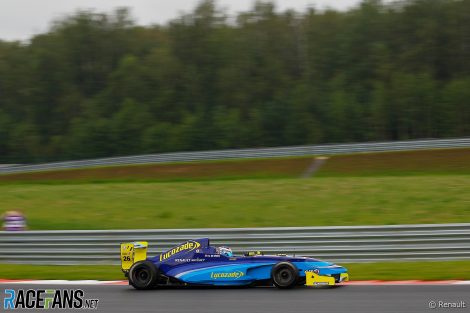It’s likely there would be no Lewis Hamilton in Formula 1 were it not for McLaren. The support he received from the team during his junior career influenced how driver development programmes operated in the years after.
With Nyck de Vries, McLaren sought to replicate the success they enjoyed with Hamilton. But De Vries will make his debut as a full-time driver with a different team next year, long after parting with McLaren. So what led the team and their promising young talent to part ways?
After taking Hamilton up to F1, McLaren (whose young driver development programme was run jointly with Mercedes) only had Giedo van der Garde on their books in junior single-seaters. He entered the scheme in 2006 at the same time as he joined the crack ASM team in the Formula 3 Euro Series, taking over the seat Hamilton occupied the year before.
That his entry into the programme was connected to his seat drew immediate Hamilton comparisons; the same was true for McLaren’s next signing, Oliver Rowland. The British karter was signed up in May 2007 at the age of 14 – one year older Hamilton was when he joined the team almost a decade earlier. Both had won Super 1 national titles at the junior level the year before.
McLaren were quick the play down the inevitable parallels. “No driver is the next Lewis Hamilton,” they said at the time. “Each driver is individual and we have certainly not brought Oliver into the programme with the aim of him following Lewis’s exact career path.”
Rowland himself added “it is not for me to draw comparisons with Lewis”, and he was right to. Because it was actually another Dutchman, rather than a Brit, that felt the true brunt of being the next ‘chosen one’ after Hamilton.
Ron Dennis, as with every part of McLaren during his time as team principal, was meticulously picky with supporting young drivers and made sure McLaren had a say in almost every detail of Hamilton’s junior career. But by 2009 he had stepped back in charge of McLaren’s F1 team and was succeeded by his right-hand man Martin Whitmarsh. His approach was different, but still heavily influenced by the structures and systems that Dennis had put in place, as well as the success of Hamilton.
In March 2010 – notably during the same week that McLaren bought back 29% of Mercedes’ 40% share in the team – an expanded, eight-member young driver programme was revealed.
Rowland and Van der Garde remained, while…
Click Here to Read the Full Original Article at RaceFans…

